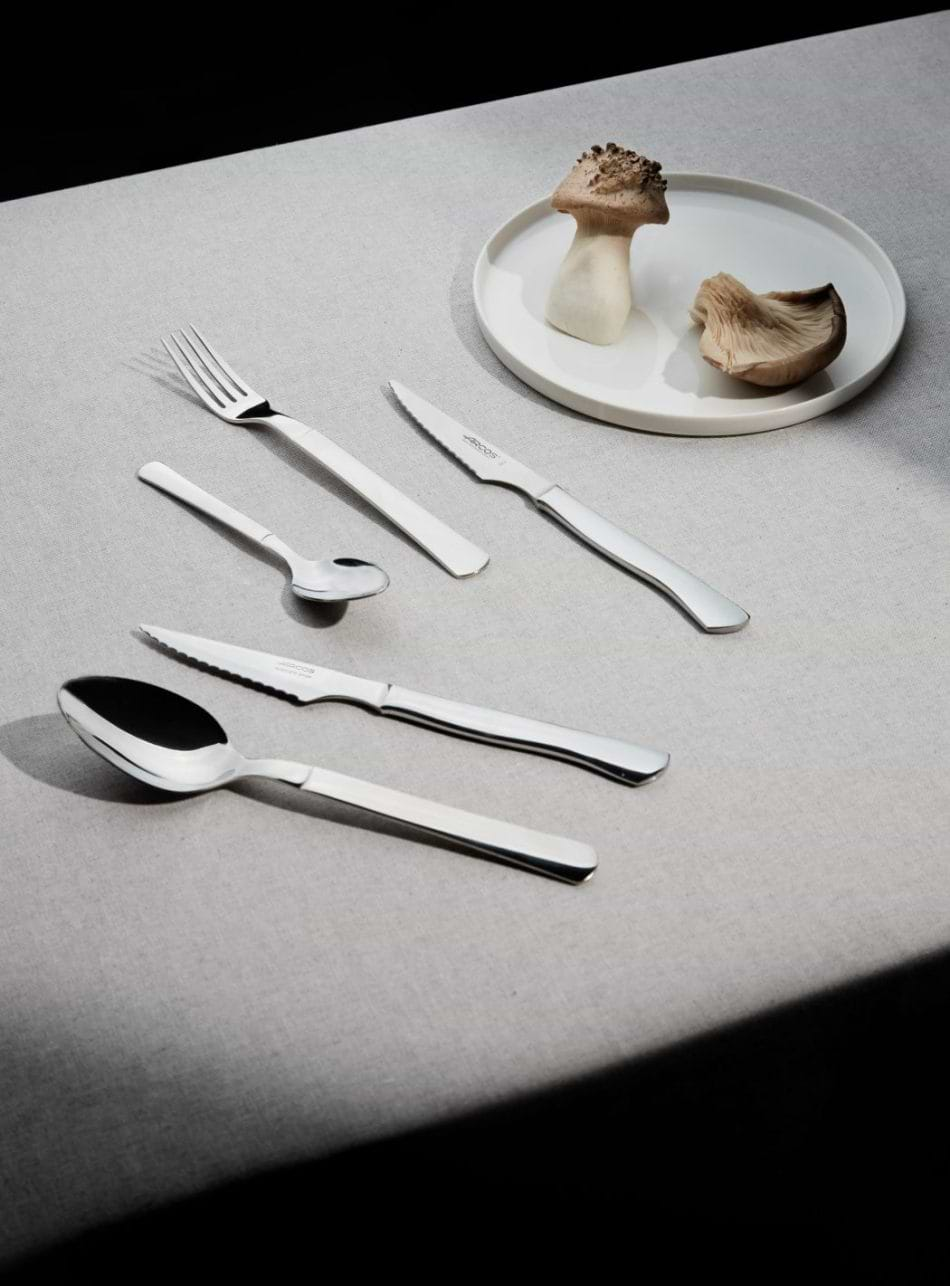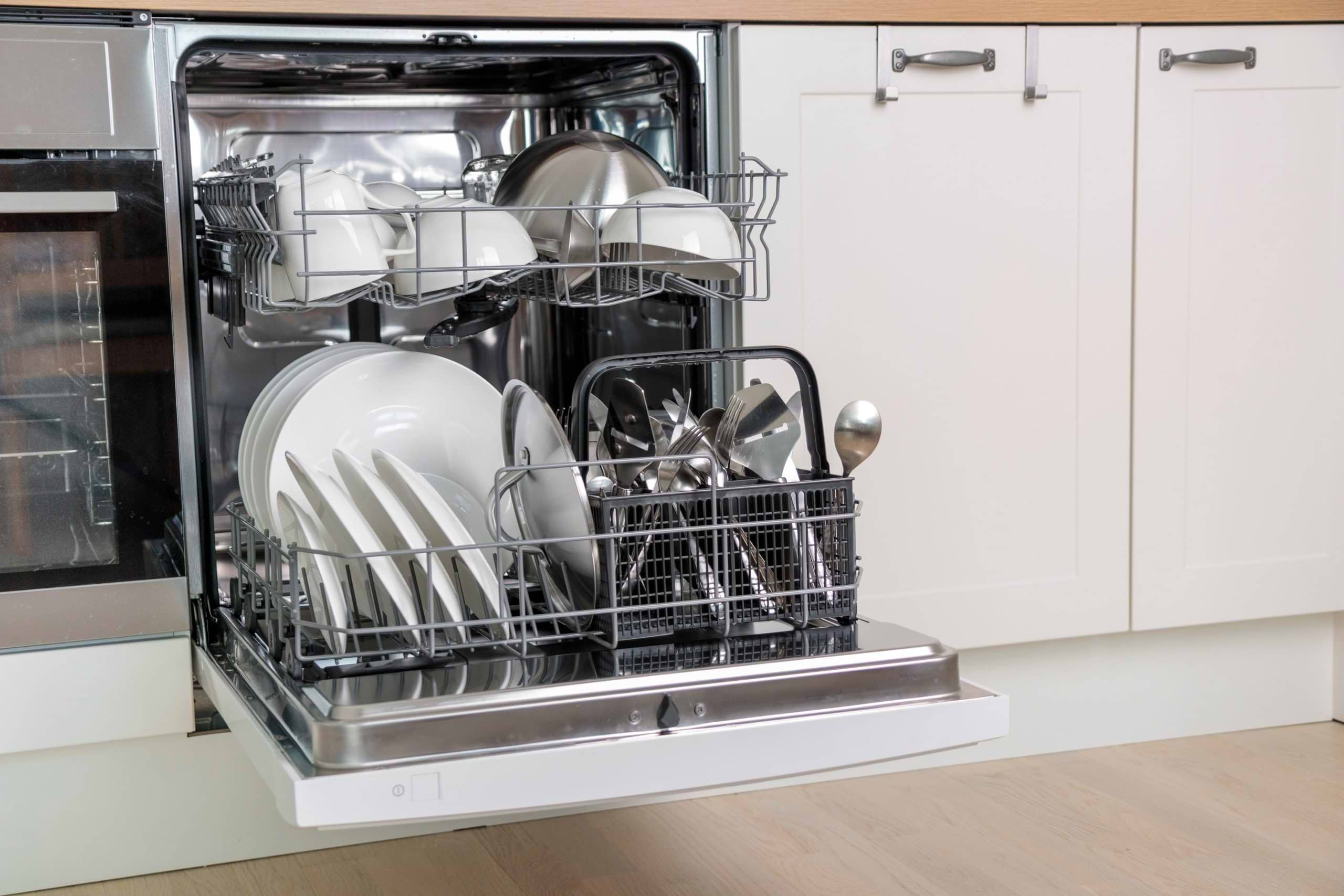How to prevent rusting on stainless steel cutlery
Brown stains on your cutlery? Rust spots? Don’t panic! You’re definitely not the first to notice this after unloading the dishwasher. Even though stainless steel cutlery is made from durable, resistant materials, it can still rust if not properly cared for or if you don’t follow good cleaning practices with your dishwasher. That’s why we want to explain why your cutlery can get rusty in the dishwasher and, most importantly, what you can do to remove rust from your cutlery or entire cutlery sets. Take note.
Why do cutlery items rust in the dishwasher?
Contrary to what you might think, the truth is that cutlery made from “stainless steel” can actually end up rusting. We know, it sounds quite contradictory, but that’s the reality.
Stainless steel contains chromium. To put it simply, this is a component that forms a protective layer, making it quite resistant to possible corrosion. However, there are certain factors that can significantly damage this layer and cause those terrible stains or even rust to appear. These include:
-
Excessive use of detergent or very aggressive detergents.
-
Accumulation of salt or food residues on the cutlery for a long time before being properly washed.
-
Prolonged contact with hard water, which has a high mineral content.
-
Direct contact with other types of metals during the washing cycle, for example with other kitchen utensils.
-
Prolonged humid environments, such as leaving the cutlery inside the dishwasher after the cycle has finished without drying them in time.
Knowing that these practices are not good for the materials of our cutlery, all we have to do is avoid repeating them and be careful with their maintenance.

Removing rust from cutlery: what can I do?
We know what you’re wondering: if I’ve already found my cutlery rusted, is there any way to remove that rust or do I have to consider my cutlery set a lost cause? Not at all! There are several tricks—some of which we’ll share with you today—that can really help you restore your cutlery’s almost original shine. Take note, as they’re very easy to put into practice:
- White vinegar and baking soda: a classic remedy. Mix both ingredients and scrub the cutlery well with a soft cloth or a toothbrush. Let it sit for a few minutes before rinsing with warm water.
- Lemon and salt: another time-honored trick. The acid in the lemon combined with the abrasive action of the salt can be your best ally against rust. Want to see it work? Scrub well, let it sit, and rinse afterwards.
- Special anti-rust products: if you’re looking for a very quick and powerful solution, we recommend using mild rust removers suitable for this type of material, including stainless steel. Just be sure to always follow the manufacturer’s instructions step by step.
Once you’ve finished cleaning and restoring your cutlery, remember to dry it very well. You can use a soft cloth to help. Never let them air dry, as standing water can cause stains to reappear. Trust us on this we have plenty of experience.

How to prevent stains and rust on cutlery in the dishwasher
The best way to prevent your cutlery from rusting is through prevention. Here are some practical tips to help you keep your cutlery in perfect condition, just like on the first day of use:
-
Rinse the cutlery before putting it in the dishwasher, especially if it has remains of acidic foods such as tomato, vinegar, or mustard.
-
Avoid overloading the dishwasher. If the cutlery is too close together, the water and detergent won’t circulate properly and, as a result, they won’t be cleaned as they should.
-
Place the cutlery with the handle facing down (except for knives, for safety reasons). This greatly improves cleaning and drying.
-
Don’t mix different metals, such as cutlery with aluminum pots. The reaction between metals can promote the appearance of this annoying corrosion.
-
Always use dishwasher-specific salt and make sure the compartment is completely full.
-
Open the dishwasher door at the end of the cycle to let the steam out and thus avoid excessive condensation.
-
Dry them by hand if you notice they are still damp, especially if you’re not going to store them immediately. This may seem trivial, but it’s actually quite important.
How to care for your cutlery in the long term?
In addition to following all the guidelines we mentioned earlier, if you want your cutlery to last for many years, it’s important to always store it in a dry place. If possible, use high-quality cases or separators. Occasionally, restore the natural shine of your cutlery by polishing it with a microfiber cloth.
If you only use your cutlery occasionally, check on it from time to time to make sure no rust has appeared due to environmental humidity.
With these tips, you’ll be able to keep your cutlery in perfect condition. And if you see that it’s impossible, take the opportunity to renew your cutlery set at Arcos.

